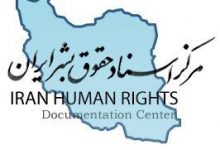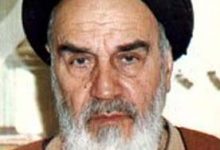Aadel Collection
Situation of human rights in the Islamic Republic of Iran
Report of the Special Representafive of lttp://www.uithr .cWHuridocdalHuridocansf/O/72cd076de00f1416802. . ,
UNITED
NATIONS
( General
Assembly
Distr.
GENERAL
N5661
20 October
1995
Original:
ENGLISH
Fiftieth session
Agenda item 112 (c)
HUMAN RIGHTS QUESTIONS: HUMAN RIGHTS SITUATIONS AND REPORTS
OF SPECIAL RAPPORTEURS AN]) REPRESENTATIVES
Situation of human rights in the Islamic Republic of Iran
Note by the Secretary-General
The Secretary-General has the honour to transmit to the members of the General Assembly the interim report
submitted by Mr. Maurice Danby Copithorne (Canada), Special Representative of the Commission on Human
Rights on the situation of human rights in the Islamic Republic of Iran, in accordance with paragraph 12 of
Commission on Human Rights resolution 1995/68 of 8 March 1995 and Economic and Social Council
decision 1995/279 of 25 July 1995.
ANNEX
Interim report on the situation of human rights in the
Islamic Republic of Iran, submitted by the Special
Representative of the Commission on Human Rights in
accordance with Commission resolution 1995/68 and
Economic and Social Council decision 1995/279
I. INTRODUCTION
1. On 23 December 1994, the General Assembly adopted resolution 49/202 entitled “Situation of human
rights in the Islamic Republic of Iran” in which, inter alia , it decided to continue the examination of the
situation of human rights in the Islamic Republic of Iran, including the situation of minority groups, such as
the Baha'is, during its fiftieth session under the item entitled “Human rights questions”, in the light of
additional elements provided by the Commission on Human Rights and the Economic and Social Council
(para. 15). The General Assembly expressed its concern at the main criticisms of the former Special
Representative in his recent reports with regard to the human rights situation in the Islamic Republic of Iran
(para. 3).
1 of6 4/28/2010 2:11 PM
Report of the Special Representative of http://www.mihchr.ch'Huridocda/Huridoca.nsf/O/72cd076de00fld16802...
2. At its fifty-first session, the Commission on Human Rights decided, by its resolution 1995/68 of 8 March
1995, to extend for a further year the mandate of the Special Representative, as contained in Commission
resolution 1984/54 of 14 March 1984 (para. 11) and requested the Special Representative to submit an
interim report to the General Assembly at its fiftieth session on the situation of human rights in the Islamic
Republic of Iran, including the situation of minority groups such as the Baha'is, and to report to the
Commission at its fifty-second session (para. 12). In its decision 1995/279 of 25 July 1995, the Economic and
Social Council endorsed that resolution.
3. By letter dated 28 March 1995 addressed to the Chairman of the Commission on Human Rights, the former
Special Representative, Professor Reynaldo Galindo Pohl (El Salvador) resigned from his functions, after
serving the Commission on Human Rights for nine years. On 2 August 1995, the Chairman of the Commission
appointed Professor Maurice Danby Copithorne (Canada) as Special Representative of the Commission on
Human Rights on the situation of human rights in the Islamic Republic of Iran.
4. The Permanent Representative of the Islamic Republic of Iran to the United Nations Office at Geneva
transmitted three communications dated 8 May, 23 May and 30 June 1995 to the Special Representative,
giving replies to some of the allegations contained in the previous interim and final reports of the Special
Representative (A!49/514, annex, paras. 6, 7, 27, 28, 62, 77 and 79 and E/CN.4/1995/55, paras. 20 and 36).
The texts are appended to the present report.
II. PRELIMiNARY REMARKS
5. The Special Representative is honoured to have been invited by the Chairman of the Commission on
Human Rights to serve as Special Representative on the situation of human rights in the Islamic Republic of
Iran. He accepted this invitation and as of the date of this report, has made a brief visit to the Centre for
Human Rights at Geneva to begin his familiarization of the area covered by his mandate.
6. At this time, the Special Representative wishes to pay tribute to his predecessor, Professor Reynaldo
Galindo Pohl, whose devoted attention over many years to this mandate has set a high standard. The Special
Representative will be studying Mr. Galindo Pohl's reports with the greatest care.
7. The Special Representative will also be reviewing most closely the relevant debates and resolutions of the
General Assembly, of the Commission on Human Rights and, more generally, the expectations of the
Commission and the General Assembly with respect to special representatives and rapporteurs. The Special
Representative will also familiarize himself generally with the contemporary environment as it may be
relevant to his mandate.
8. Since Mr. Galindo Pohl's final report to the Commission on Human Rights earlier this year (E/CN.4
/1995/5 5), a significant number of communications have been received by the Centre for Human Rights for
the attention of the Special Representative. They come from the Government of the Islamic Republic of Iran
(see annexes) and from non-governmental organizations, groups and individuals within and outside the
Islamic Republic. These communications reflect important concerns and will need careful scrutiny.
9. Also high on the Special Representative's priority list is a visit to the Islamic Republic of Iran. In a meeting
with the Permanent Representative of the Islamic Republic of Iran to the United Nations Office at Geneva on
4 September 1995, the Special Representative made a request for such an invitation. He subsequently
repeated this request by letter dated 6 September 1995. As of the date of this report, the Special
Representative has not received a reply to his request for a visit.
10. At this stage, the Special Representative considers that he is not in a position to discuss questions of
2 of6 4/28/2010 2:11 PM
Report of the Special Representative of http://www.mihchr.ch'Huridocda/Huridoca.nsf/O/72cd076de00fld16802...
substance in this report. However, he expects to make a substantive report to the Commission on Human
Rights at its fifty-second session and trusts that such report can include first-hand impressions and findings
obtained during a visit to the Islamic Republic of Iran.
APPENDIX I
Letter dated 8 May 1995 from the Permanent Representative of the
Islamic Republic of Iran to the United Nations Office at Geneva
addressed to the Special Representative of the Commission on
Human Rights on the situation of human rights in the Islamic
Republic of Iran
In response to your request, I have the pleasure to draw your attention to the following information received
from Tehran:
(a) Hengameh Amini in a letter to Nimrouz weekly news printed in London announced that the Mojahedin
Khalgh Organization members prevented her from talking to her mother by telephone. The reason she was
summoned by judicial officials was due to charges made by her brother regarding possession of some antiques
left by their mother (Marzieh);
(b) Nasrollah Tavakkoli was arrested on charges of insurgency against the security of the State and was
released in October 1993 on bail by the relevant court;
(c) Davood Mozaffar was arrested on charges of illegal export of unauthorized goods (claimed by the
Ministry of Finance and Economy). On 25 January 1995 he was found not guilty and was released;
(d) Zainab Ghovati was arrested because of involvement in armed insurgency and violation of public order in
1985 and was sentenced to life imprisonment. Later on, in January 1994, she was pardoned by the relevant
officials;
(e) Zahra Falahati was brought to trial in 1982 on charges of involvement in armed insurgency against the
security of the country and was sentenced to six years' imprisonment. In July 1982 she was pardoned. She
was arrested again in 1988 and after thorough legal procedure was sentenced to death in June 1988;
(1) According to investigation there is no record about Mohammad Sepehr. Therefore, any allegations about
him are categorically refuted;
(g) Houshang Amjadi Bigvand was arrested on charges of espionage on 19 October 1988 and after legal
proceedings was sentenced to 10 years' imprisonment. He is serving his sentence in jail. He is presently
undergoing medical care due to an ulcer ailment;
(h) Mohammad Ali Amouie was sentenced to life imprisonment on charges of espionage. Due to his age, he
has been provided medical care outside the prison since last November;
(i) According to a report and a diagram submitted by the highway police inspectors of Hormozgan Province
police district after conducting an on-site inspection of the accident on 19 July 1994, Haj Mohammad Ziaie's
car was overturned from (rolled over) an approximately 45-metre-high cliff due to speeding on a sharp curve,
70 kilometres away from Bandar Lengeh in the north. Therefore, the allegations surfaced in the Amnesty
International bulletin published in London on 11 November 1994 are totally baseless and are categorically
refuted. In the meantime, I would like to refer you to paragraph 47 of our response last year to the Special
3 of6 4/28/2010 2:11 PM
Report of the Special Representative of 'Huridocda/Huridoca.nsf/O/72cd076de00fld16802...
Rapporteur;
(j) Abbas Amir Entezaam, son of Yaghob, was arrested on charges of espionage. According to legal
procedures, he was tried publicly and in the presence of the attorney and witnesses in the court. The late
Bazargan, the then Prime Minister of the Provisional Government of Iran, had an active presence during his
trial which was video-taped and aired by Iranian television;
(k) About Mr. Ali Akbar Saudi Syijani, I would like to draw your attention to the following information
received from Tehran:
“Referring to letter No. 72/483 8 dated 73/9/7 regarding the death cause of Ali Akbar Saudi Syrjani subject of
burial permit no. 73/5704, our comment is as follows:
With regard to the examination of the body and its autopsy and the result of pathology and negative result of
toxicology, therefore, the cause of death of the aforementioned individual is determined to be from internal
disease (cardiac/respiratory and expanded blood vessels' disease and its complications).
on behalf of
Dr. Hasan Toufighi
Director, Coroner's Office
Dr. Naseh”
Please accept, Sir, the assurances of my highest consideration.
( Signed ) Sirous Nasseri
Ambassador
Permanent Representative
APPENIIIX II
Letter dated 23 May 1995 from the Permanent Representative of
the Islamic Republic of Iran to the United Nations Office at
Geneva addressed to the Special Representative of the
Commission on Human Rights on the situation of human rights in
the Islamic Republic of Iran
Following our reply to your report last year to the General Assembly, I would like to draw your attention to
the following information about Zohreh Izadi received from the judiciary Coroner's office in Tehran:
In response to the inquiry made by the Tehran Prosecutor General Branch 17, in its letter dated 26 May 1994,
regarding the case of the late Zohreh Izadi, the Medical Commission held a meeting in August 1994 with Dr.
Mahmoud Amoui ID No. 24949, Dr. Seyed Rahmatulah Mir Safaie, Expert, Coroner's Office, Dr. Faramarz
Godarzi, Deputy, Coroner's Office ID No. 2575 and Dr. Zareh ID No. 157/3 in the presence of Mr.
Zarinkafsh, the Prosecutor General.
At the beginning, the autopsy report and negative result of the toxicology was read in the meeting. Then the
penal record was reviewed and the explanations of the relatives of the deceased were heard.
4 of6 4/28/2010 2:11 PM
Report of the Special Representative of http://www.mihchr.ch'Huridocda/Huridoca.nsf/O/72cd076de00fld16802...
At the end of the discussion among the above-mentioned experts the following responses were given to the
inquiries made by the prosecutor:
(a) All the effects on the body of the deceased were caused when she was alive and none of them were
caused after her death;
(b) The effects were caused because of her fall from a height; there could be no other possibilities;
(c) The fall was on the left side of the body. The effects that are visible on the right side of the body are
regarded as the secondary effects of the fall;
(d) The lack of apparent dark blue spots on the body, noting the bone fractures and deep blood coagulation
and internal bleeding in the chest and abdomen, do not reject that the cause of death was falling down from a
height. It is very much possible in such cases that the internal injuries may cause the death while there are no
visible spots or effect on the skin;
(e) Though it could not be possible to categorically determine the height, but noting the severity of the injuries
it was certainly more than 5 metres;
(1) There were some minor injuries on the upper chest and neck areas, but they are far from the normal
effects caused by suffocating. Since in autopsy there were no injuries on the sensitive areas of the neck and
respiratory system, the probability of suffocation is rejected. Noting the shape of the injuries and their sites in
the body, the probability of fighting is also rejected.
( Signed ) Sirous Nasseri
Ambassador
Permanent Representative
APPENINIX III
Letter dated 10 June 1995 from the Permanent Representative of
the Islamic Republic of Iran to the United Nations Office at
Geneva addressed to the Special Representative of the Commission
on Human Rights on the situation of human rights in the Islamic
Republic of Iran
Following the murder of the Iranian Pastors, Rev. Mickailian and Rev. Dibaj, in which the Judicial Authorities
of the Islamic Republic of Iran conducted an immediate and thorough investigation to bring the perpetrators
to justice, the trial of the accused, Farahnaz Anami, Batoul Vaferi Kalateh and Maryam Shahbazpoor, has
been held in Tehran on Sunday, 18 June 1995.
The trial has been attended by local and foreign journalists as well as representatives from various countries.
A number of witnesses, including Mr. Hamid Rezaie, the person in charge of the house agency through which
the accused rented the house, the mother and sister of Farahnaz Anami, Rev. Iraj Mutahede, Pastor Dimitri
Blus and his wife, have so far been questioned by the prosecutor and cross-examined by the attorneys of the
accused.
The trial is expected to take some time before reaching a verdict.
5 of6 4/28/2010 2:11 PM
Report of the Special Representafive of lttp://www.uithr .cWHuridocdalHuridocansf/O/72cd076de00f1416802. . ,
( Signed ) Sirous Nasseri
Ambassador
Permanent Representative
1±QM I SITE MAP I SEARCH I INDEX I DOCUMENTS I TREATIES I MEETINGS I PRESS I STATEMENTS
© Copyright 1996-2000
Office of the United Nations High Coniniissioner for Human Rights
Geneva, Switzerland
6 of 6 4/28/2010 2:11 PM







